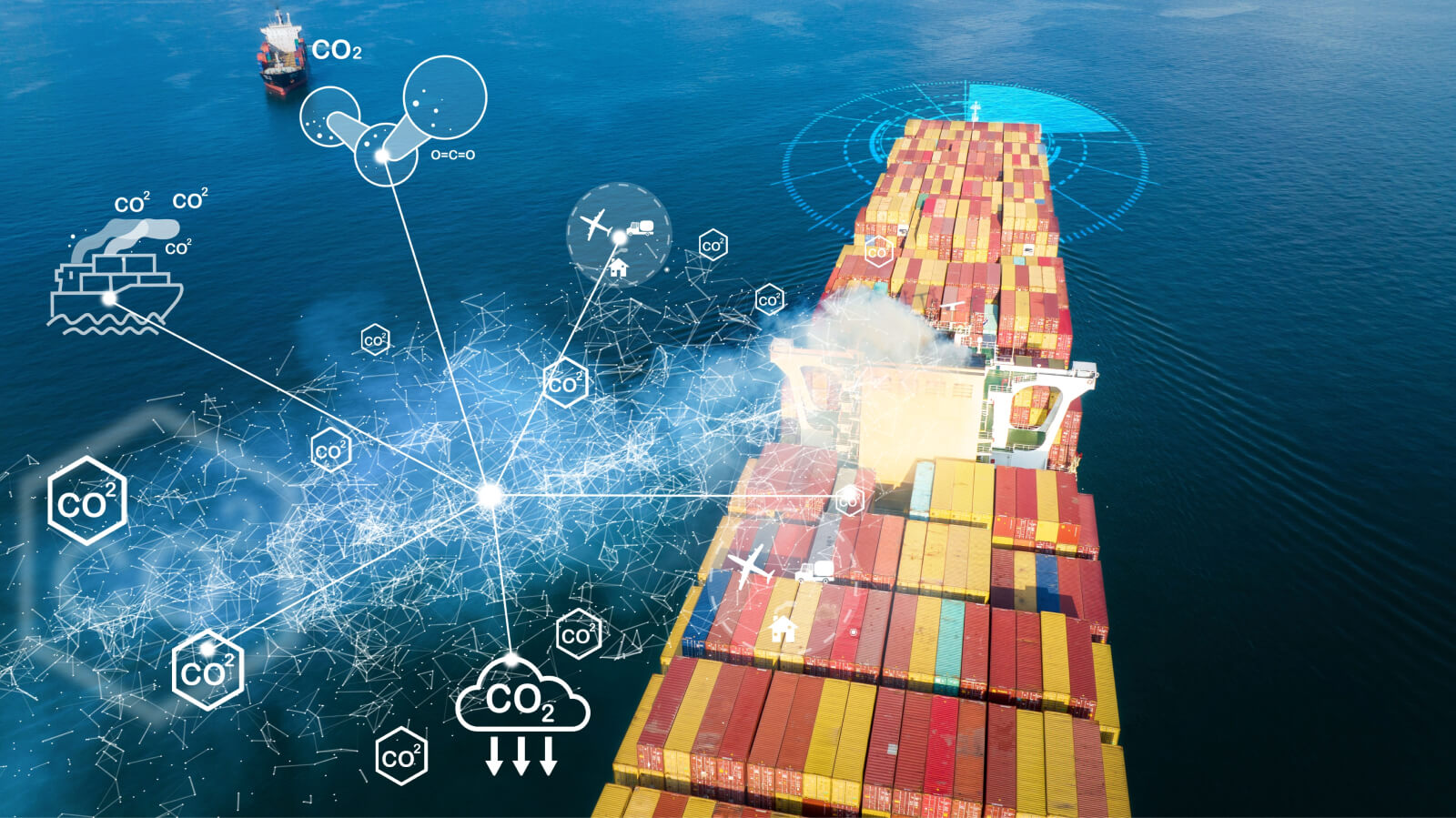
This article originally appeared on Forbes.com
Players across the shipping industry recognize that it’s time to turn the ocean green.
No, nobody is about to dump dye into the water. This isn’t St. Patrick’s Day in FourKites’ hometown. Rather, the industry is beginning to grapple with the waste and pollution created by maritime shipping, with its heavily-laden ships fired by sulfuric sludge. Forward-thinking industry and regulatory leaders recognize that these externalities simply aren’t sustainable—for the environment, for business and beyond. For example, earlier this year, new International Maritime Organization (IMO) Carbon Intensity Indicator (CII) regulations have begun requiring shippers to measure how efficiently a ship transports goods or passengers, with thresholds becoming increasingly stringent toward 2030.
So, shipping is starting to clean up its act. But we’ve only just begun to chip away at the ocean pollution iceberg, and it will take an industry-wide effort to conquer it. While many shippers are investing in new low-carbon fuels, emissions-reduction technology and cleaner vessels, there is still a long way to go toward turning the ocean green. From new technologies to innovative logistics strategies, here are a few ways the industry is working toward tackling sustainability in ocean shipping.
Companies are increasingly getting a full report of what their emissions are—including Scope 1, 2 and 3 emissions—and working to diminish them over time. This is a result of increased regulations, such as the IMO’s CII rules, just as much as increased innovations and general interest surrouding sustainability.
This is progress, but it isn’t perfect. For example, many current emissions calculations only take weight into account, without considering other factors, such as whether a ship has sulfur-reducing exhaust scrubber systems in place or slow steams across the ocean to keep emissions down. Without fully understanding their emissions, companies’ efforts to tackle them may be inefficient.
And while many companies are complying with regulations and express interest in reducing emissions, their financial commitment is less enthusiastic. Many have not yet made the required investment in the equipment, technology and human expertise to truly vault this hurdle.
While older ships can be retrofitted with devices to lower emissions, many shippers have discovered that the quickest fix is just to go slower. According to Danish Ship Finance, a 10% drop in cruising speeds can slash fuel usage by almost 30%.
The practice seems to be working quite well. Rather than racing across the ocean and sitting in anchorage until their unloading appointment, ships can take their time and make it just in time—saving fuel and money in the process. In fact, during last year’s congestion, the Ports of Los Angeles and Long Beach had incoming ships steam more slowly if they knew they would be idling once they arrived.
Of course, this “just in time” estimate is only as precise as the data shippers use to calculate it. With historical data and benchmarking, shippers can have a much more accurate view of their lanes, the percentage of journeys that were on-time versus under or over time, and other data points to help them keep their journeys as slow and smooth as possible.
One recent regulation that has worked is the International Convention for the Safety of Life at Sea (SOLAS) Verified Gross Mass (VGM) declaration, which requires a carrier to weigh cargo before loading.
This matters a lot when it comes to waste. Before the regulations went into effect in 2016, carriers would often simply guess how heavy a container was, meaning ships weren’t always loaded evenly on each side. When a tilted ship hits rough seas, containers full of valuable goods can slide right off.
Today, technology is doing even more to help shippers avoid this kind of waste. Today’s smart indicators can monitor a ship’s tilt as well as refrigerator temperature (especially important when there are delays), condensation, impact and other factors that might lead to cargo spoilage and damage.
From autonomous and automated navigational technologies to alternative fuels and exhaust mission technologies, the industry is burgeoning with next-generation solutions that will help usher in green ocean shipping. They’re even bringing back some ingenious last-generation solutions—sails, anyone?
Of course, all these new technologies come at a cost. Yara, a client of ours, has a zero-emission cargo ship that is beautiful and full of promise, but it is not yet an affordable option for every company around the globe. However, we should look toward historical patterns around similar technologies—in particular, electric cars—to see what the future might hold; as we continue to capture economies of scale, electric cars are becoming affordable and ubiquitous. It’s an encouraging sign of what’s to come.
The journey will be long and not without some rough seas. But from exciting innovations to essential regulations, maritime shipping is slowly steering itself toward sustainability. It’s spurred on by growing inclinations among today’s conscious customers to put their dollars toward greener alternatives—which is, perhaps, the strongest motivator of all. Altogether, the industry is en route toward making the ocean a whole lot greener.